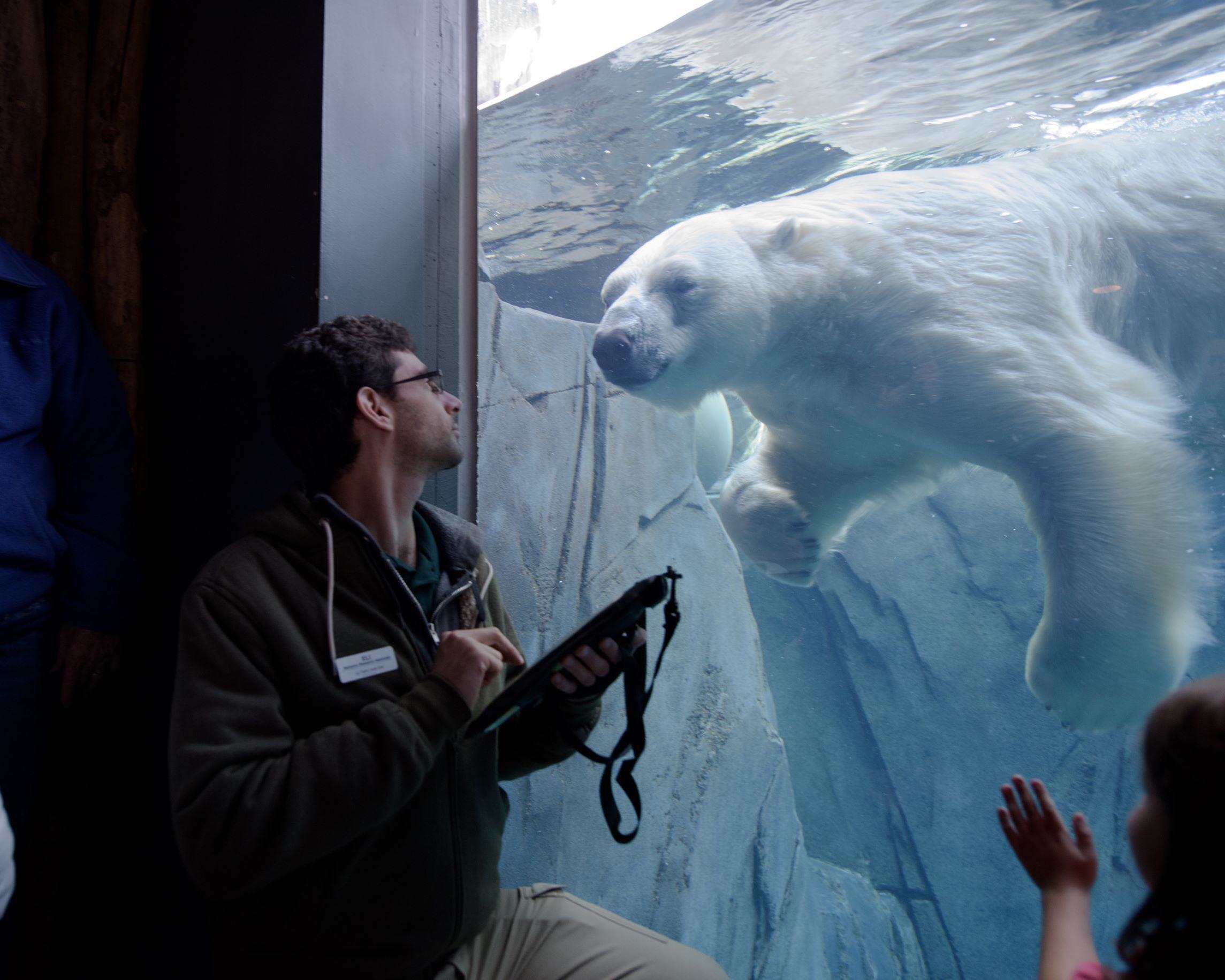
Observations of polar bear Kali at the Saint Louis Zoo. Credit: Saint Louis Zoo
Have you ever noticed someone with a stopwatch and clipboard watching animals at the Saint Louis Zoo? Or, have you ever participated in a survey while at the Zoo? If you have, you’ve caught a rare sighting of a zoo scientist in action! The Zoo supports a diverse team of scientists who conduct research on a range of topics including animal behavior, reproduction, endocrinology, welfare, veterinary health, ecology, genetics, and nutrition. There are even scientists that study people! Our research is extensive and diverse, and it’s a key reason why the Zoo is a leader in science and conservation efforts around the world.
In 1988, the Zoo hired Dr. Cheryl Asa, a reproductive physiologist, to launch its research department. Over the next two decades, the Zoo expanded its research endeavors and created laboratories for the study of animal behavior and endocrinology. Major achievements included producing the world’s first banteng, an endangered species of wild cattle from Southeast Asia, by artificial insemination, and producing the world’s first wolf to be conceived using cryopreserved (frozen) semen. Today, we are one of the only zoos to maintain a “Frozen Zoo” that holds sperm, eggs, and other tissues from animals to preserve genetic diversity in animal populations for the long-term.
Our dedication to science and research continues to expand. In 2004, the Zoo established the Saint Louis Zoo WildCare Institute, pledging to support initiatives where animals are threatened by shrinking habitats, poaching, and disease. In 2011, to address the challenges associated with the growing interconnections between the health of humans and the animal kingdom, we established the Saint Louis Zoo Institute for Conservation Medicine. Though our Zoo staff have been studying animal welfare for many years, the Zoo just hired its first full-time animal welfare scientist in 2020. It is this ongoing investment by the Zoo in growing its research capacity that makes it a world leader in zoo-based science.
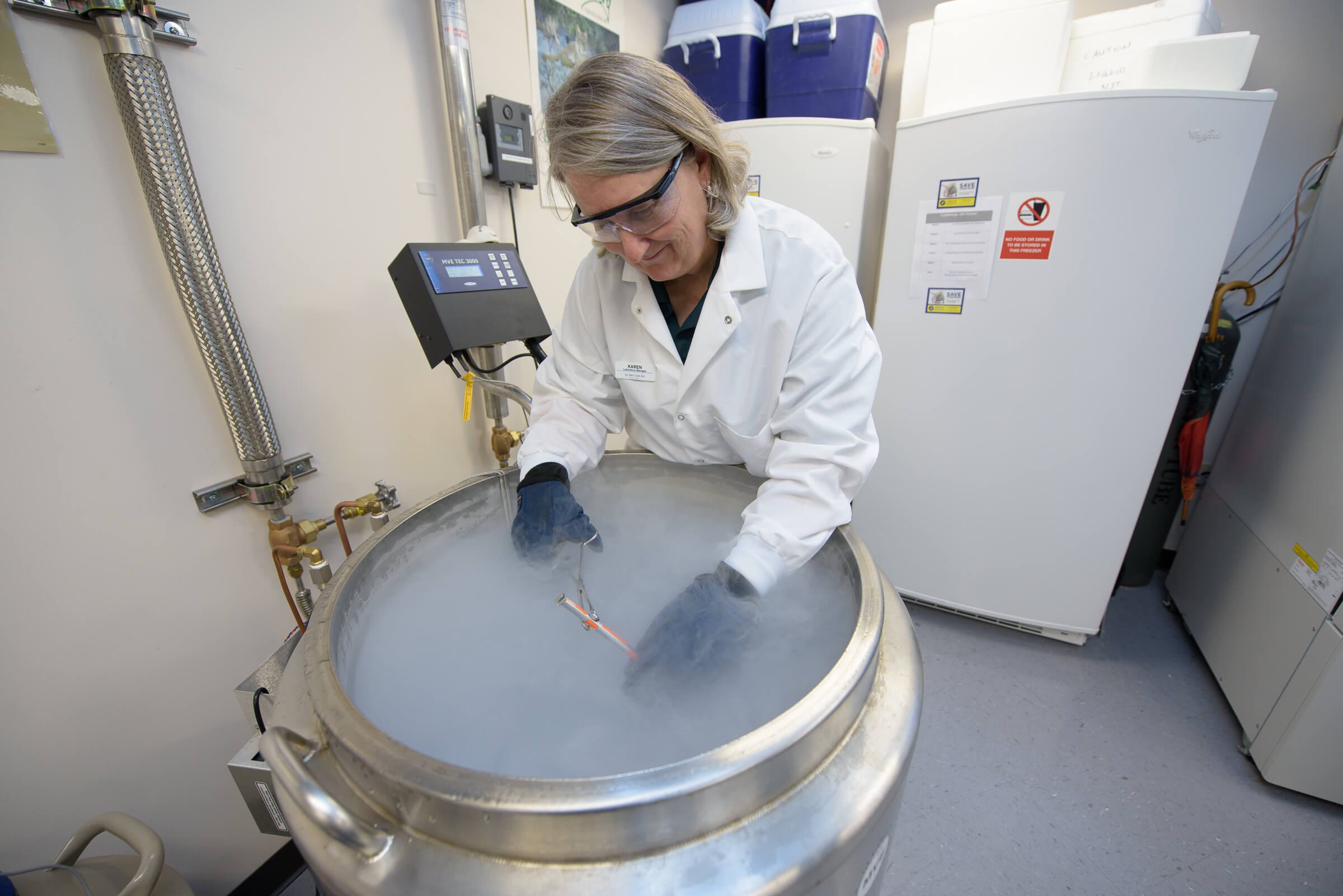
Researchers working in the Zoo’s “Frozen Zoo” facility. Credit: Saint Louis Zoo
Today, the Zoo is among the top 10 most productive zoos in the Association of Zoos and Aquariums (AZA) in terms of research output. In the last five years, the Zoo has produced 127 publications in edited books, peer-reviewed scientific journals, and trade publications, and it has developed 456 publications since 1968. Recent publications include studies of how walking through naturalistic immersion exhibits at the Zoo positively impacts psychological and physical well-being in visitors, the role of season and reproductive status on hormone levels in Cuban crocodiles, nutritional status of wild Humboldt penguins, and mother-infant behavior in Somali wild asses. We report our research activity to the AZA annually and on average, our scientists work on 43 projects every year.
Currently, our staff are working on projects focusing on habitat use in the Zoo’s black rhinos, studying the native biodiversity at the Saint Louis Zoo WildCare Park, and developing indicators of welfare in snakes, among others. Our research endeavors cross barriers and support many aspects of our community at home and abroad both for animals and people. They provide important opportunities for students to obtain advanced degrees necessary to ignite careers in conservation, wildlife management, and the natural sciences. Since 2015, students working with Zoo scientists have earned 12 master’s, doctoral, veterinary or other professional degrees.
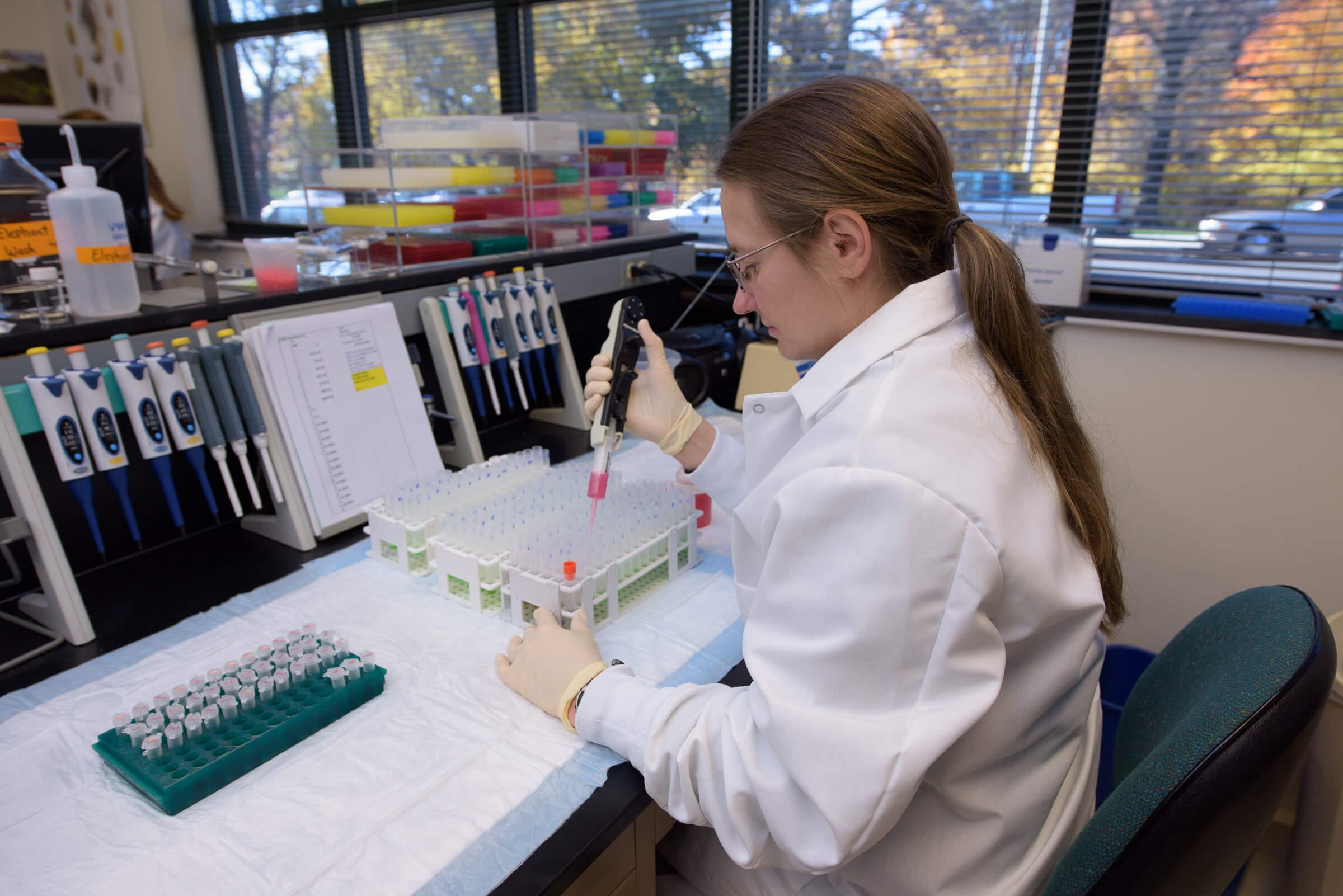
Researcher at the Saint Louis Zoo. Credit: Saint Louis Zoo
It goes without saying that our work behind-the-scenes is essential to conservation efforts and providing excellent animal care, and the Zoo is an incredibly important resource for scientists at other facilities. Our research committee has reviewed 104 proposals since 2016, and 58 of those were from external scientists looking to study zoo animals, obtain biomaterials (e.g. blood or hair samples), access animal records, or survey our staff about various animal-related topics. Our research is not only expansive – it’s also diverse: 62% of these projects focus on mammals, 24% focus on reptiles and amphibians, 10 % focus on birds, and 2% focus on invertebrates. Animal husbandry, welfare, genomics, and veterinary health are the most common topics of proposals from outside researchers who want to collaborate with our experts and resources. But those aren’t the only areas of interest. Since 2016, the Zoo has reviewed four proposals from outside researchers wanting to study our visitors! Some scientists at the Zoo study humans to better understand peoples’ affiliation for animals, likelihood of engaging in conservation activities, and the impact of zoo visits on visitor health.
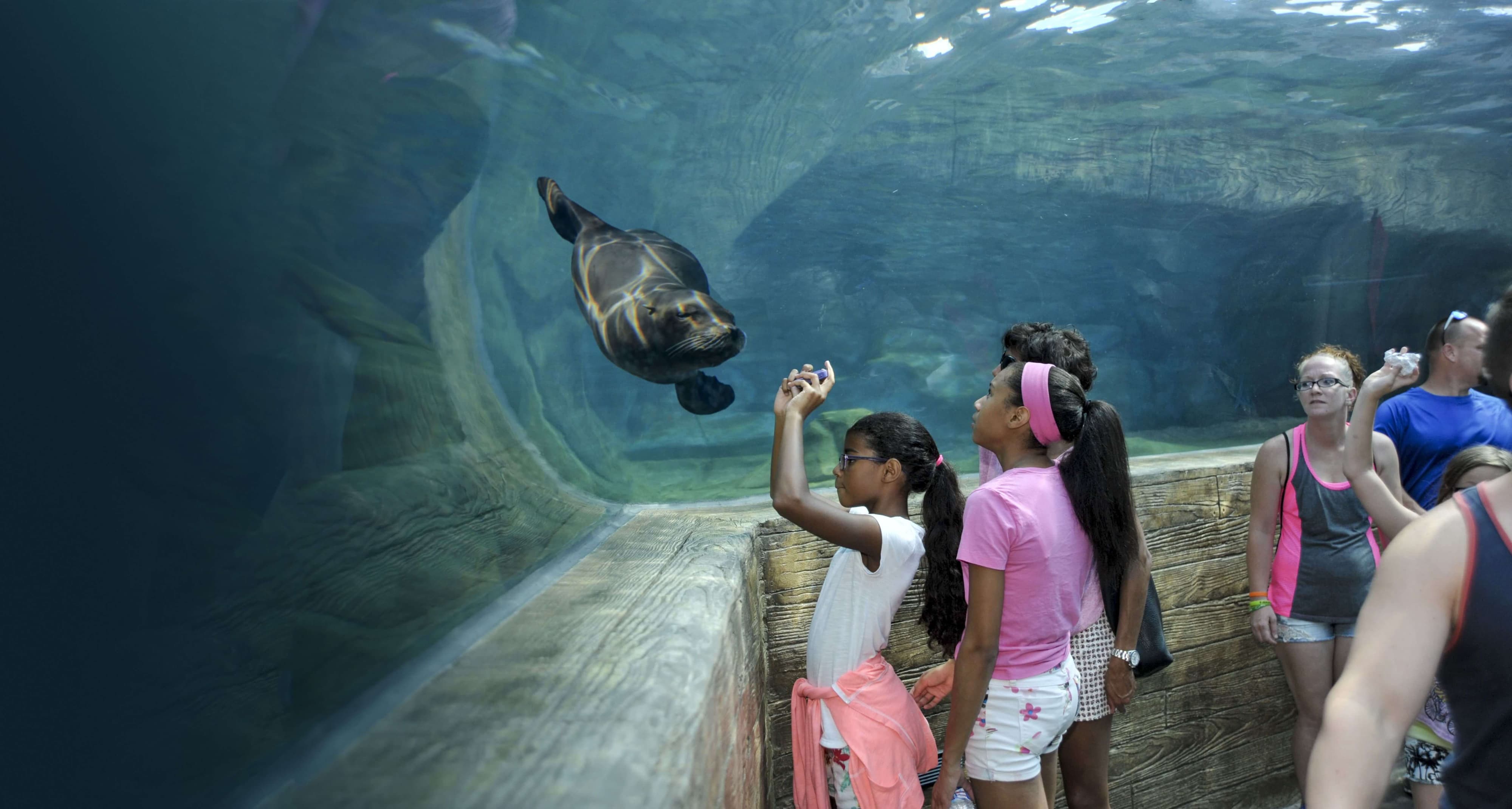
Visitors at the Saint Louis Zoo. Credit: Saint Louis Zoo
The results of the studies completed by Zoo scientists and outside collaborators are used to further our knowledge of animals, enhance their care, and support their survival in the wild. One key example of the success of these efforts can be seen in the Channel Island fox. Studies by Zoo scientists on behavior and reproduction of this species supported a collaborative recovery program for the foxes that was very successful and lead the fastest downlisting of any endangered mammal listed on the Endangered Species Act, just 12 years after it was listed. Our research and conservation initiatives will expand with the creation of the Saint Louis Zoo WildCare Park and the Saint Louis Zoo Sears Lehmann Jr. Wildlife Reserve.
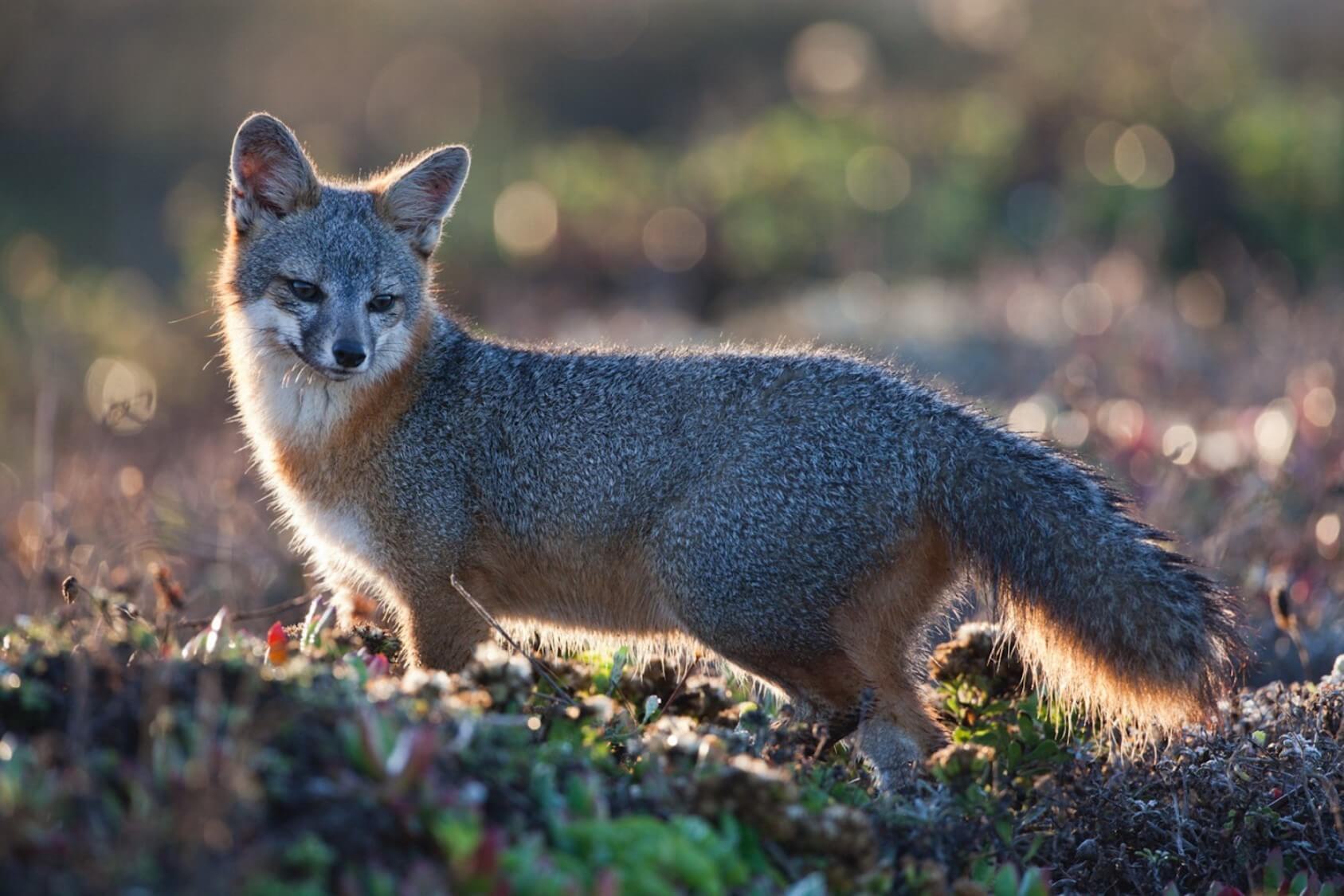
Channel Island Foxes. Credit: National Park Service
With the Saint Louis Zoo’s continued commitment to supporting science, it is certain to maintain its status as one of the leading zoo-based research facilities and a leader in conservation efforts in the United States. It’s just one more reason to be proud of your Saint Louis Zoo!

